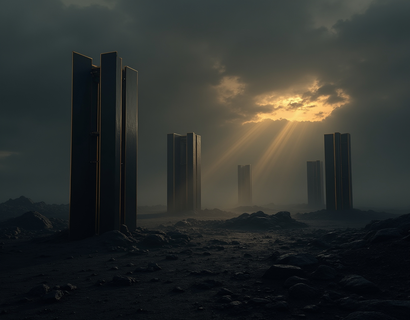Unlocking the Secrets of the Indus: A Deep Dive into Ancient Architecture, Culture, and Innovation
The Indus civilization, one of the oldest and most enigmatic of the ancient world, flourished around 2600 to 1900 BCE in the regions now known as Pakistan and northwestern India. This civilization, also known as the Harappan civilization after one of its major urban centers, Harappa, left behind a legacy of remarkable achievements in architecture, urban planning, and technology. Through this comprehensive guide, we will explore the profound and lasting impact of the Indus civilization on modern society, delving into its cultural, architectural, and technological advancements.
The Indus civilization is often overshadowed by more well-known ancient societies like Egypt and Mesopotamia, yet it stands out for its unique contributions. One of the most striking aspects of Indus urban planning is the sophisticated city layout. Cities such as Mohenjo-Daro and Harappa were built with a grid system, featuring straight streets and well-planned drainage systems. This advanced urban design was unprecedented for its time and laid the foundation for future city planning.
The Indus people were master builders, constructing homes, public baths, and granaries with a level of precision and craftsmanship that is still admired today. The houses were typically made of brick, with multiple stories and well-ventilated rooms. The use of standardized bricks, which were produced in molds to ensure uniform size and shape, was a significant innovation. This standardization not only facilitated construction but also ensured consistency and quality across the civilization.
One of the most impressive architectural achievements of the Indus civilization is the Great Bath of Mohenjo-Daro. This large public bathing structure, built around 2500 BCE, is a testament to the Indus people's understanding of water management and their emphasis on cleanliness and ritual. The Great Bath was lined with waterproof mortar, and it had a sophisticated drainage system to remove water. This structure suggests that bathing was an important part of Indus culture, possibly for religious or hygienic reasons.
The Indus civilization also made significant strides in water management and irrigation. The people developed an extensive network of wells, tanks, and canals to manage the waters of the Indus River and its tributaries. This system allowed for the cultivation of crops in an otherwise arid region, supporting a large and stable population. The ability to control and distribute water efficiently was crucial for the civilization's agricultural success and economic prosperity.
In terms of culture, the Indus people had a rich and complex society. Evidence of a written language, though not yet fully deciphered, suggests a sophisticated system of governance and record-keeping. The presence of seals with intricate designs and inscriptions indicates a high level of artistic and administrative skill. These seals were likely used for trade and identification, reflecting a well-organized economy.
The art of the Indus civilization is characterized by its realism and attention to detail. Figurines of humans and animals, often made from clay or steatite, showcase a range of activities from everyday life to religious rituals. The famous "Dancing Girl" figurine, with its graceful pose and detailed features, is a prime example of the artistic prowess of the Indus people. These artifacts provide valuable insights into the daily life, beliefs, and values of the civilization.
Religion played a significant role in Indus society, though much about their religious practices remains a mystery due to the undeciphered script. However, archaeological findings suggest a polytheistic belief system with a focus on natural elements and fertility. The discovery of a priest-king figurine, wearing a headdress and holding what appears to be a ceremonial object, hints at a hierarchical religious structure. Temples and bathing structures like the Great Bath may have been central to religious life, indicating a strong connection between religion and public life.
The Indus civilization's technological innovations extended beyond architecture and urban planning. They were skilled metalworkers, working with copper, bronze, and even early forms of iron. The production of tools, weapons, and decorative items demonstrates a high level of craftsmanship and technological knowledge. The use of the wheel, both for transportation and pottery, was another significant advancement that facilitated trade and daily activities.
Trade was a vital aspect of the Indus economy, with evidence of extensive trade networks reaching as far as Mesopotamia and the Persian Gulf. The discovery of Indus seals and artifacts in these regions, along with Mesopotamian goods found in Indus sites, underscores the extent of their commercial interactions. This trade not only brought wealth to the Indus civilization but also facilitated the exchange of ideas and cultural practices.
The decline of the Indus civilization around 1900 BCE remains one of its greatest mysteries. Factors such as climate change, environmental degradation, and possible invasions have been proposed, but the exact cause is still debated. Despite its eventual decline, the Indus civilization left an indelible mark on the regions it once thrived in, influencing subsequent cultures and societies.
The legacy of the Indus civilization can be seen in the modern architecture and urban planning of South Asia. The principles of grid-based city layouts, advanced drainage systems, and standardized building techniques have continued to influence construction practices. Moreover, the Indus people's emphasis on cleanliness and water management remains relevant today, as cities around the world grapple with similar challenges.
In the realm of cultural heritage, the Indus civilization has inspired numerous studies, exhibitions, and educational programs. Museums and archaeological sites continue to uncover new artifacts and insights, keeping the interest in this ancient society alive. The Indus civilization serves as a reminder of the ingenuity and resilience of early human societies and their enduring impact on the world.
For history enthusiasts and cultural scholars, the Indus civilization offers a wealth of topics to explore. From its advanced urban planning to its intricate art and technology, there is much to learn and appreciate. The Indus civilization's contributions to culture, architecture, and innovation continue to resonate, providing valuable lessons for contemporary society.











































